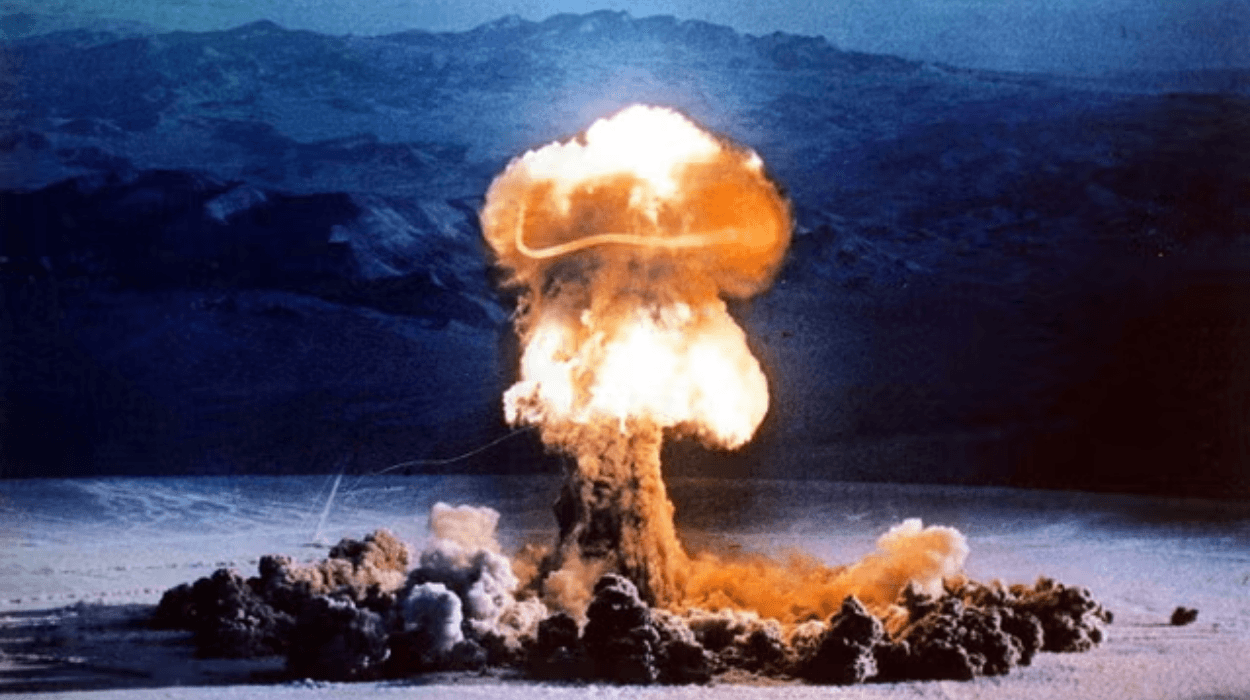Summary
- Experts say Trump's nuclear testing call costs immense money.
- Testing offers minimal benefits for modern nuclear arsenal reliability.
- US hasn't tested nuclear weapons since 1992 moratorium.
When Trump posted on Truth Social on Wednesday that he was ordering the "Department of War," his administration's preferred name for the Department of Defense, to "immediately" begin testing America's nuclear stockpile "on an equal basis" to other nuclear-armed nations, he seemed to overturn a three-decade moratorium on live nuclear explosions that had been in place since the last American weapons test in 1992.
Even a basic test that involves detonating a single warhead in an underground shaft might cost the United States upwards of $100 million, according to one expert, former National Nuclear Security Administration acting principal deputy administrator Corey Hinderstein.
The action is purportedly intended to confront China's and Russia's advanced nuclear weapons delivery systems, as well as North Korea, which has been conducting illicit nuclear tests at underground facilities for years.
The United States last detonated a nuclear bomb there in 1992, deep beneath the Ranier Mesa.
Since 1962, when above-ground and underwater nuclear testing were outlawed by the Partial Nuclear Test Ban Treaty, the location has been the sole location for any American nuclear tests.
Resuming explosive testing at the Nevada site might be a complex and expensive process, experts say, especially considering the experience lost since the last test more than thirty years ago.
In an interview with The Washington Post, Hinderstein, who leads the nuclear policy program at the Carnegie Endowment for International Peace, stated that a "new vertical shaft" would be required in order to prevent interfering with existing projects at the test site.
Since the beginning of the second Trump administration, the NNSA has also experienced a loss of expertise. During the first few months of Trump's term, the Department of Government Efficiency, led by Elon Musk, went on a rampage through the executive branch, firing many senior civil servants. During the ongoing government shutdown, even more are currently in furlough.
The experts who have been let go or placed on furlough are "the people who build the weapons, who do the enrichment of the material, who test the existing stockpile," Democratic Representative Dina Titus of Nevada told the Post.
Ernest Mortiz, the former energy secretary of the Obama administration, asserted that as long as Trump wants nothing more than an explosion, it is possible to achieve his aim of a "immediate" resumption to testing.
What are the technical steps to resume full-scale nuclear tests?
The Nevada National Security Site, where tests were last conducted in 1992, would bear major repairs and upgrades. Numerous installations have deteriorated due to decades of desuetude and government shutdowns. A large pool of technical scientists, masterminds, technicians, and support staff, preliminarily numbering over 19,000 during peak testing times, would need to be rehired and retrained. Important moxie has been lost over the decades.
For underground tests, deep perpendicular shafts must be drilled to contain the explosion and help radioactive release. This structure requires complex engineering and environmental assessment. Tests must misbehave with transnational covenants proscribing atmospheric releases, so constraint technologies and covering systems must be strictly checked and streamlined.
Nuclear tests bear expansive safety, health, and environmental reviews, and must meet convention and domestic nonsupervisory scores.

